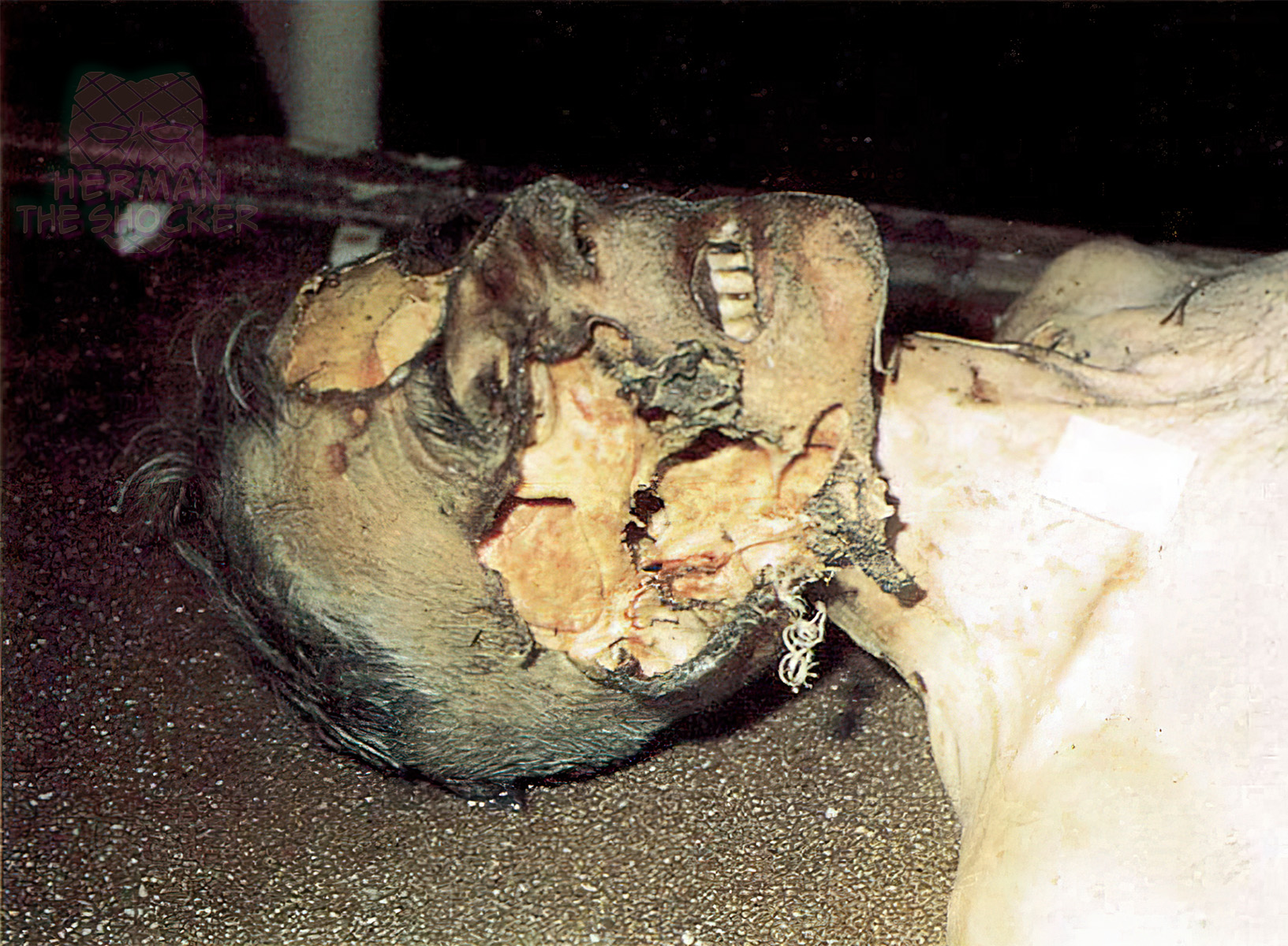This individual received the injuries postmortem by rats, cause of death unknown. No further info on the case. A body lying in the open may be damaged by the bites of mice and rats, or of larger animals such as foxes and dogs. We may easily recognize the marks of their teeth on the bones. Carrion-eating birds cause damage primarily to the unprotected soft areas, namely the eyes and face.
Apart from death scene routine and autopsy procedure, the investigation of cases of postmortem animal interference needs specific attention. While the identification of antemortem injury versus postmortem artifact generally presents no difficulties and a characteristic parallel series of furrows created by the animals incisors is indicative of rodent gnawing to bones, the determination of rodent species by the morphological appearance of damage to skin and soft tissue can be unconvincing. At first sight these injuries may be even misinterpreted as the result of a sharp-bladed instrument. However, the presence of fecal material of rodent origin at the scene, or rodent hair found in the nearby vicinity of the body, can give hints towards animal activity.
Latest posts








